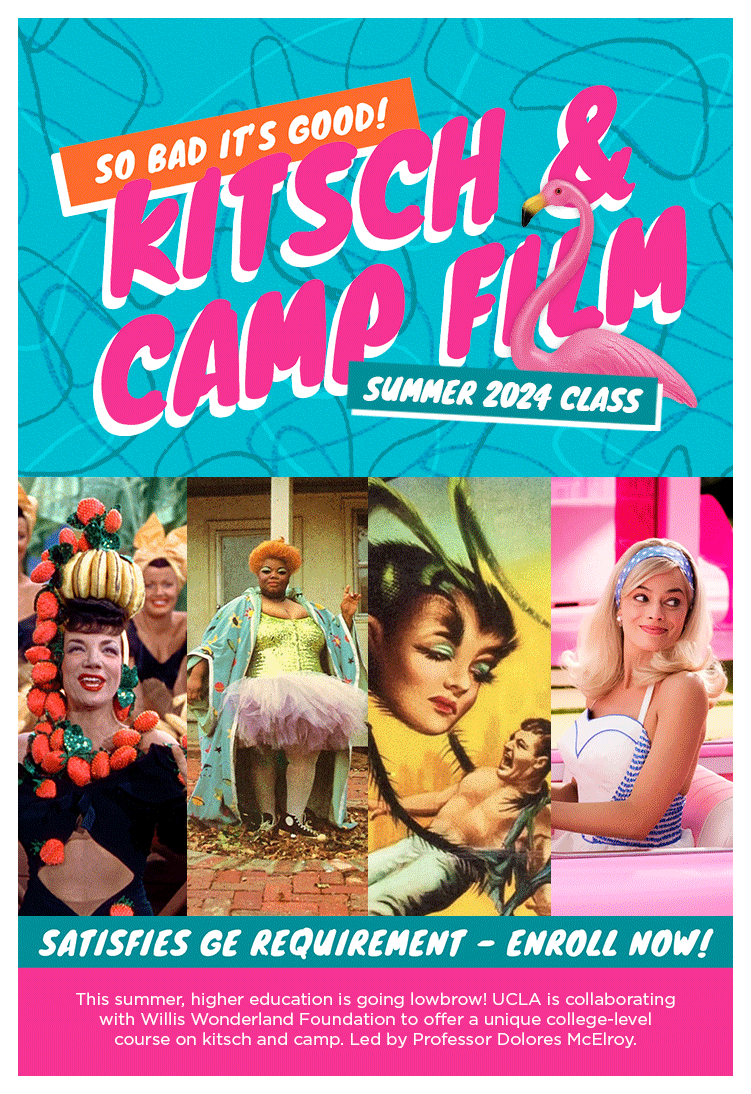So Bad It’s Good:
Kitsch & Camp Film Aesthetics Course at UCLA
INSTRUCTOR:
Dolores McElroy, Ph.D.
DATE & TIME:
June 24 – August 2, 2024
Every Monday & Wednesday
10 a.m. – 1:50 p.m.
LOCATION:
UCLA Department of Film, Television, and Digital Media
Melnitz Hall Room 1422A
Pre-enrollment is required. Spots are limited.
This summer, higher education is going lowbrow! UCLA is collaborating with Willis Wonderland Foundation to offer a unique college-level course on kitsch and camp. Led by Professor Dolores McElroy, “So Bad It’s Good: Kitsch and Camp Aesthetics” not only includes a screening of “The World According to Allee Willis” documentary but also a special field trip to Willis Wonderland! Yep, students will go to Allee’s bubble-gum pink home in Valley Village, and choose an object from her “living kitsch archive” to write about. And, that’s just one part of this awesome six-week-long course.
Look what else it covers, from the course description:
In this course, we’ll investigate what we mean when we say that something is “so bad it’s good.” Two aesthetic concepts of the modern age, “kitsch” and “camp,” will help us think through this central question.
What is “kitsch?” Often used as an all-purpose pejorative for the “bad taste” of the masses, for years kitsch was seldom explicitly defined, but nearly always derided. But in the postmodern era, “kitsch” took on new life, as artists, filmmakers, and designers consciously appropriated these “bad objects” of the past, remixing and revaluing yesterday’s detritus. “Camp,” on the other hand, is, in the words of Susan Sontag, “in the eye of the beholder.” Sometimes defined as an interpretive style, camp is sensibility which perceives an irony between a thing and its context. In some ways, “camp” is what allows us to appreciate “kitsch” in a pleasurably complex and ironic way.
In this course, we will consider the logics and histories of taste that contribute to various and changing definitions of kitsch and camp, as well as the ways that kitsch and camp manifest in cinema, including B-movie horror, musicals, the imaginaries of Route 66 and Las Vegas, queer avant-garde of filmmaking practices, as in the work of Kenneth Anger and John Waters, as well as in Japanese kawaii and American “tiki culture.” We will also investigate the political and colonial histories that underlie these aesthetics.

